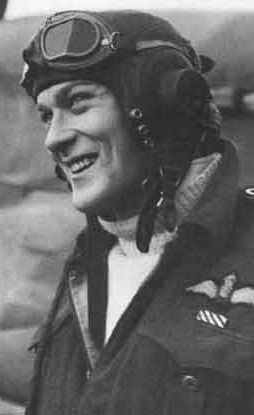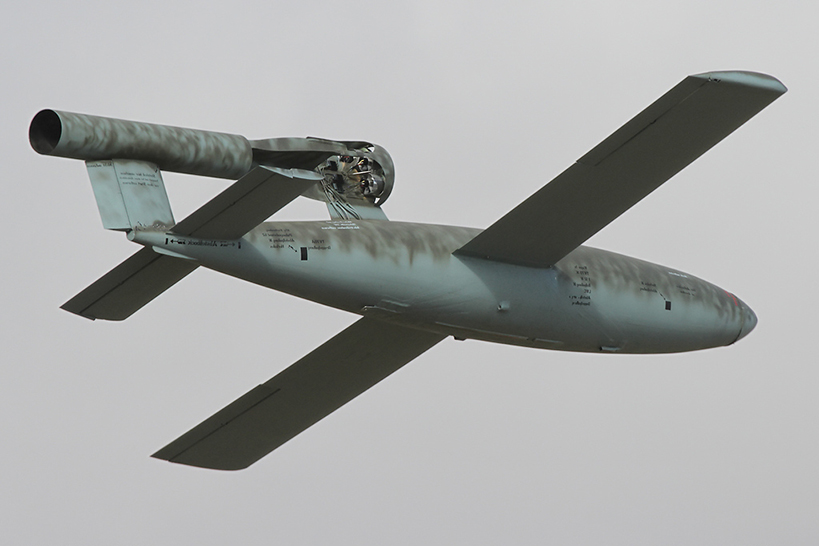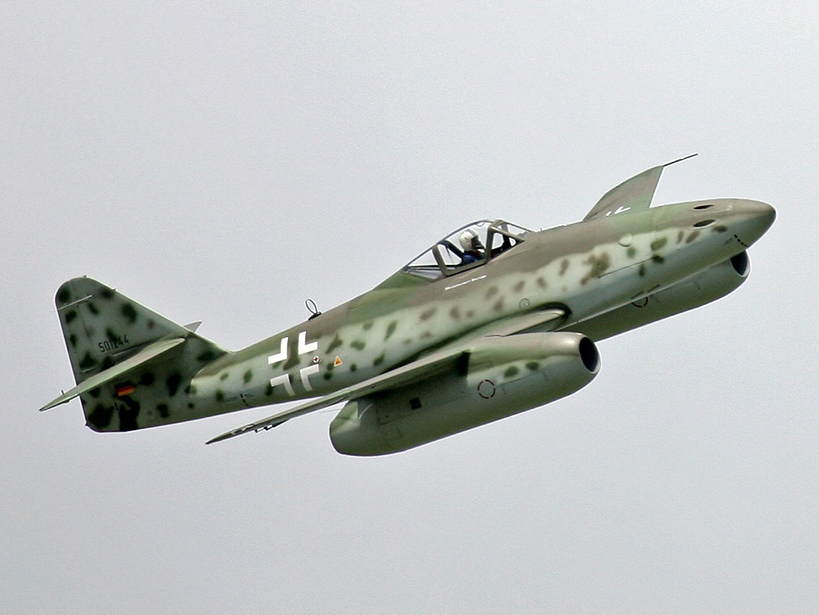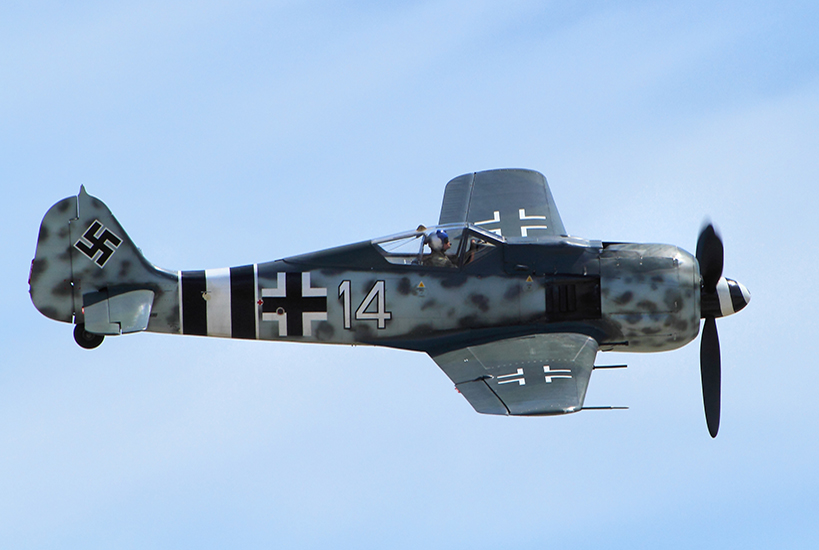Fairbanks, David Charles "Foob"
- Date of birth:
- August 22nd, 1922 (Ithaca/New York, United States)
- Date of death:
- 1975
- Service number:
- J9096
- Nationality:
- American
Biography
David Fairbanks, the son of a Cornell University professor, was born on 1923 in the USA. After finishing high school, he ran away from home to join the Royal Canadian Air Force. After a second attempt he succeeded at this and enlisted at Hamilton in February 1941. He dit not transfer to the USAAF after the US entered into war.
After training he was posted as a flight instructor to No 13 Service Flying Training School. After a year he managed to be posted in the UK. He joined 501 Squadron at Hawkinge flying Spitfire V's. His first victory was a Bf 109 on 8 June 1944, near Le Havre.
When 501 Squadron re-equipped with Tempests, Fairbanks was posted to 274 Squadron. Before the squadron moved to Europe, Fairbanks destroyed two V-1 Flying Bombs. During the next two and a half months he scored 11 1/2 victories, becoming the most succesful Tempest pilot in air combat.
On 19 November 1944, Fairbanks´ Tempest was hit by ground fire. The fuel tank caught fire and the flames burned the fuselage and tail surfaces. Fairbanks was able to return to Volkel and land safely.
Fairbanks was posted to No 3 Squadron in late December 1944. On 9 February 1945 Fairbanks was posted back to 274 Squadron as a Squadron Leader.
Only two days after his return Fairbanks downed an enemy plane, which he identified as a Me 262. Luftwaffe records shows that it was in fact an Arado Ar234B jet reconnaissance bomber. This was the first aircraft of this type to be destroyed by Allied forces.
On the way back from a train busting mission on 28 February 1945 , Fairbanks led six Tempests to attack 40 Fw 190s and Bf 109s. After a hard fight he was finally shot down by a Fw 190 and was immediately captured. Fairbanks spent the rest of the war as PoW.
After the war, Faibanks flew Vampires and T-33s with the RCAF Auxiliary working for Sperry Gyroscopes. He also spent two years in the UK flying Meteors. In 1955 he became a test pilot at de Havilland Canada. At the early age of 52, "the Terror of Rheine" died a natural death.
Do you have more information about this person? Inform us!
- Period:
- Second World War (1939-1945)
- Rank:
- Flight Lieutenant
- Unit:
- No. 274 Squadron, Royal Air Force
- Awarded on:
- January 23rd, 1945
"Flight Lieutenant Fairbanks has completed a large number of sorties and has set a fine example of determination and devotion to duty throughout. On one occasion in November 1944, whilst attacking an enemy locomotive, his aircraft was badly hit and turned completely over while at a low altitude. One of the petrol tanks was pierced and a fire commenced in one of the wings. Displaying admirable coolness and great skill, Flight Lieutenant Fairbanks succeeded in righting the aircraft and set course for home. The fire in the wing died down but not before it had done much damage. Nevertheless, Flight Lieutenant Fairbanks succeeded in reaching base. This officer has invariably displayed a high degree of courage."
LG 36905/526.
- Period:
- Second World War (1939-1945)
- Rank:
- Flight Lieutenant
- Unit:
- No. 3 Squadron, Royal Air Force
- Awarded on:
- March 6th, 1945
"This officer continues to display a high standard of skill and gallantry. Within recent weeks he has destroyed five enemy aircraft, bringing his victories to eight. Flight Lieutenant Fairbanks has also effectively attacked many enemy targets on the ground. His keenness and determination have set a high example to all."
LG 36969/1263.
Second DFC awarded as a ba r for on the ribbon of the first DFC.
- Period:
- Second World War (1939-1945)
- Rank:
- Squadron Leader
- Unit:
- No. 74 (Trinidad) Squadron, Royal Air Force
- Awarded on:
- July 20th, 1945
"Squadron Leader Fairbanks has destroyed fifteen enemy aircraft. On two separate occasions since his last award he has shot down two aircraft in one sortie and in less than a fortnight he has destroyed six, including a jet propelled aircraft. As a flight and then a squadron commander he has led many daring and highly successful attacks on enemy communications, principally locomotives and road transport. In three weeks seventy-two enemy locomotives and vehicles were successfully attacked. By the excellent example he has set, his initiative and fine leadership, this officer has inspired the other members of his squadron and all pilots with whom he has come in contact."
LG 37187/3784.
Third DFC awarded as second bar for on the ribbon of the first DFC.
Sources
- Photo: Aces of WW2
- - SHORES, CH. & WILLIAMS, C., Aces High, Grub Street, London, 1994.
- Fifth Supplement to The London Gazette Issue 36905 published on the 19 January 1945
- Fourth Supplement to The London Gazette Issue 36969 published on the 2 March 1945
- Fourth Supplement to THe London Gazette Issue 37187 published on the 17 July 1945
- Air Force Association of Canada
- The Hawker Tempest Page






